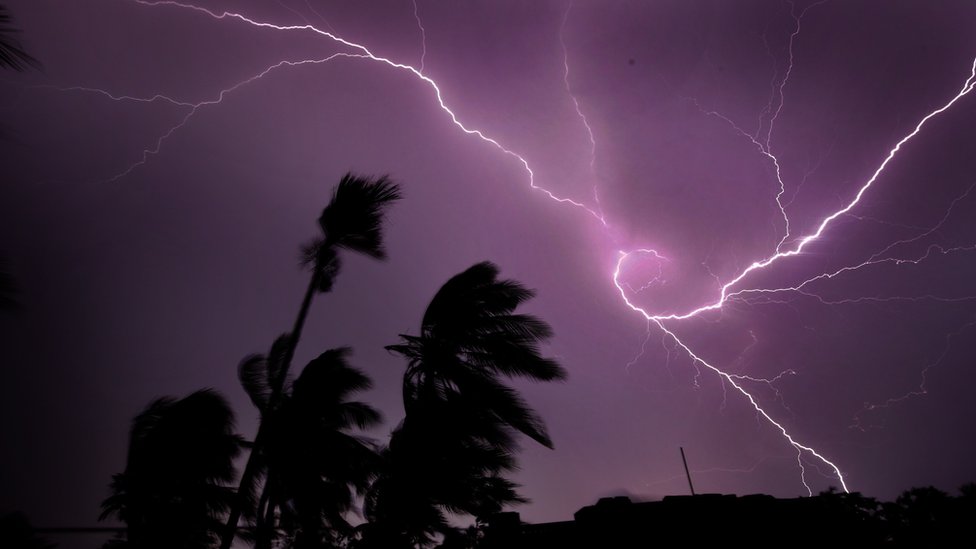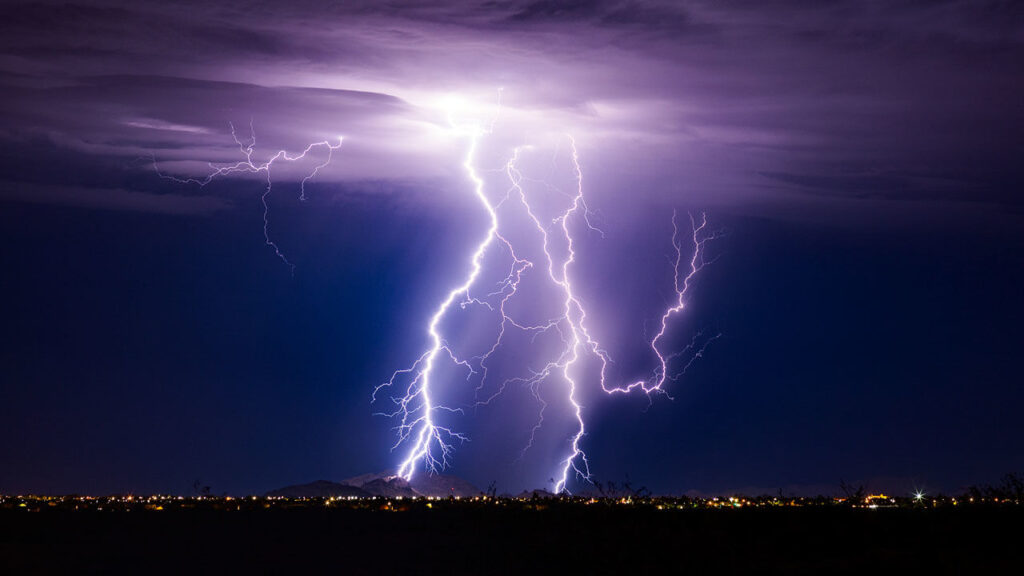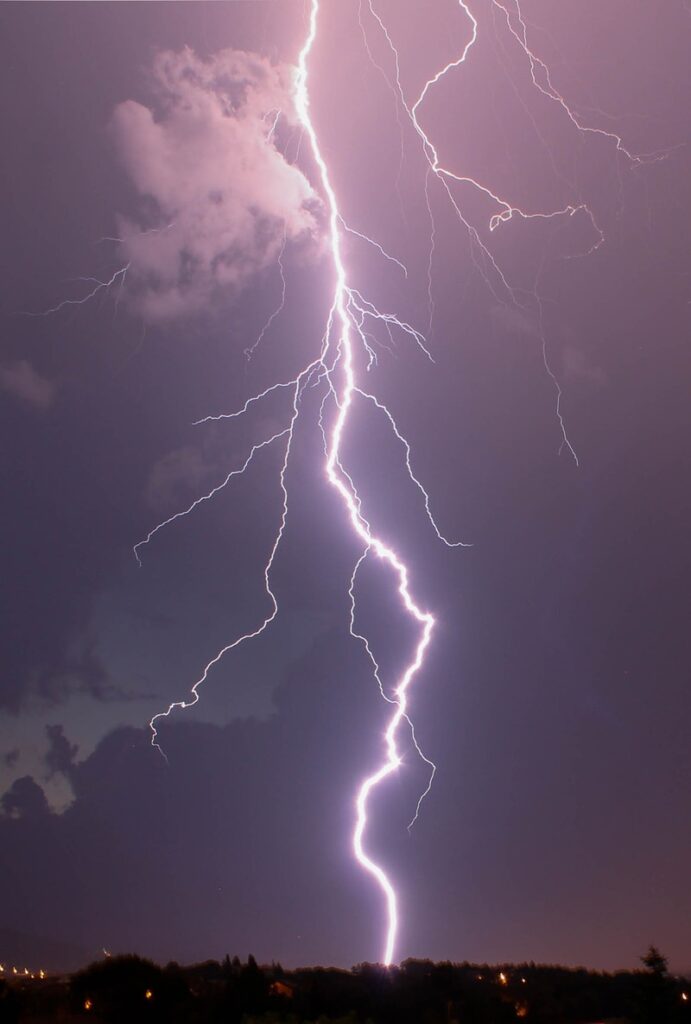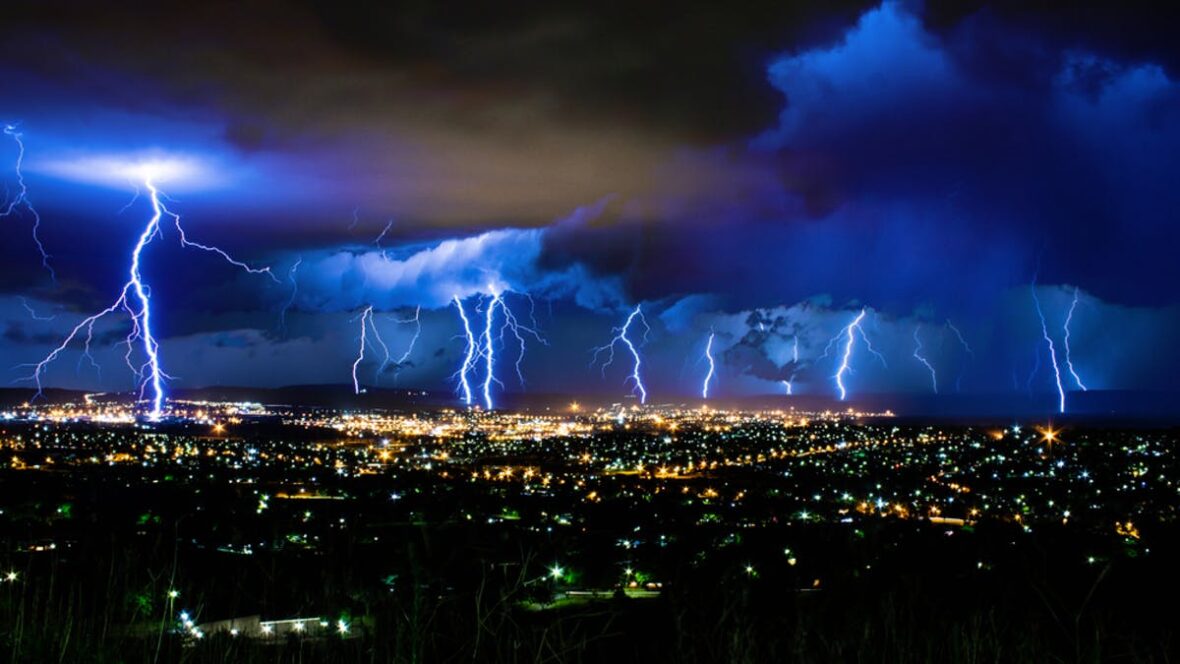Mother Nature never ceases to amaze us! Lightning is just one of its precious powerful creations! It happens when the negative charges (electrons) in the bottom of the cloud are attracted to the positive charges (protons) in the ground. Lightning is a giant discharge of electricity accompanied by a brilliant flash of light and a loud crack of thunder. Take a look below for 25 fun and awesome facts about lightning.
1. You can’t have thunder without lightning. That’s because thunder is the sound caused by lightning.
2. Lightning creates heat hotter than the Sun. Though predictions range, experts say that can be as hot as 50,000 degrees Fahrenheit.
3. Lighting itself doesn’t have a temperature. Those 50,000 degrees are the temperature of the air or other materials as the lightning passes through it.
4. Though we usually associate lightning with rainy storms, the phenomenon does not need rain to occur.
5. Lightning can strike the same place twice – or more! The Empire State Building was once used as a lightning laboratory because it is hit nearly 25 times per year, and has been known to have been hit up to a dozen times during a single storm.

6. Lightning bolts are not very wide. Photographs seem to indicate that the ‘channel diameter’ of lightning bolts averages between two and seven inches.
7. Lightning researcher Martin Uman has observed lightning channels as long as 90 miles.
8. A lightning bolt can have up to a billion volts of electricity. That’s about the same amount of power as 79.4 million car batteries or 666 million AA batteries.
9. Lightning is responsible for an estimated 24,000 deaths throughout the world in a given year. Many of those are in poorer or more rural parts of the world.
10. The planet is hit by lightning an average of 1.4 billion times per year. If each of those hit a person, humanity would cease to exist in five years flat.

11. There are two types of lightning, negative and positive.
12. A ‘negative bolt’ of lighting – when a negative charge is transferred from a cloud to the ground—is by far the most common type of lightning.
13. While the flashes we see as a result of a lightning strike travel at the speed of light (670,000,000 mph) an actual lightning strike travels at a comparatively gentile 270,000 mph. This means it would take about 55 minutes to travel to the moon, or around 1.5 seconds to get from London to Bristol.
14. Lightning is indiscriminate and it can find you anywhere. Lightning may hit the ground instead of a tree, cars instead of nearby telephone poles, and parking lots instead of buildings.
15. Sheltering under a tree is just about the worst thing you can do. If lightning does hit the tree, there’s the chance that a ‘ground charge’ will spread out from the tree in all directions. Being underneath a tree is the second leading cause of lightning casualties.

16. While a house is the safest place you can be during a storm, just going inside isn’t enough. You must avoid any conducting path leading outside, such as electrical appliances, wires, TV cables, plumbing, metal doors, or metal window frames.
17. Lightning often strikes more than three miles from the thunderstorm, far outside the rain or even the thunderstorm cloud.
18. Though his “kite experiment” about the nature of electricity may or may not have happened, Benjamin Franklin did come upon the idea of securing lightning rods to the tops of buildings to protect structures from the impact of lightning strikes.
19. People who are struck by lightning are often temporarily covered with what’s known as red Lichtenberg figures, which are branching, tree-like patterns created by the passage of high voltage electrical discharges along the skin.
20. The human body doesn’t store electricity. It is perfectly safe to touch a lightning victim to give them first aid.

21. Bolts of light illuminate the sky above the intersection of the Catatumbo River and Lake Maracaibo in north-western Venezuela more than 300 nights a year, often flashing several times a second.
22. Florida experiences more lightning than any other U.S. state. But Venezuela experiences more lightning than anywhere on Earth.
23. The $78 million Atlas-Centaur 67 rocket, launched in poor weather conditions in March 1987, was struck by a lightning bolt 49 seconds after launch, causing its controls to fail and the rocket to start falling apart.
24. Star Wars fanatic Graham Duck was a victim of a lightning strike. When a bolt struck the roof of his house in northern England, a fire ignited in the attic, where he kept £20,000 of Star Wars toys and memorabilia.
25. Park ranger Roy Sullivan holds the Guinness Record for being struck by lightning seven times. Even though he survived those strikes he took his own life at the age of 71.




